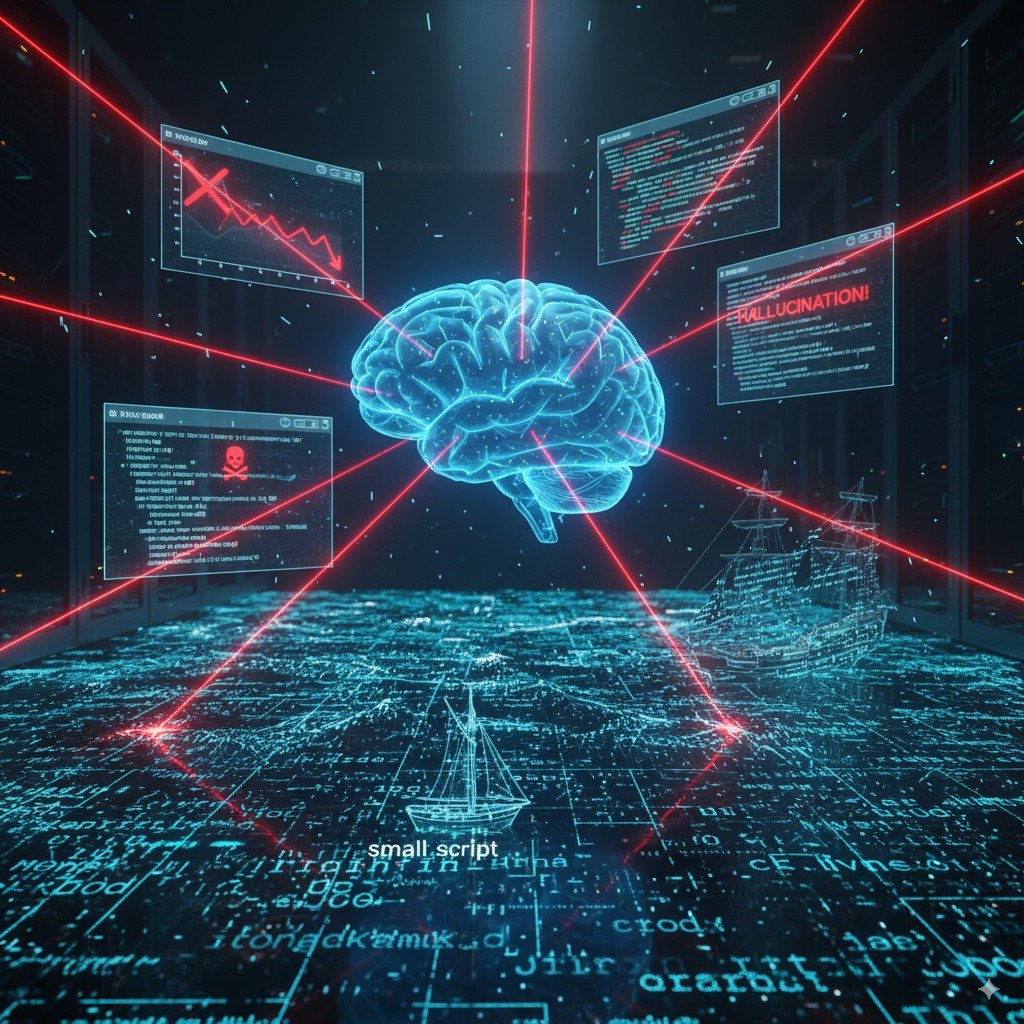The Challenges of LLMs in Large Codebases and How Startups Can Leverage the New Changes
Explore the pitfalls of using Large Language Models (LLMs) in complex codebases and discover how startups can harness their power for faster innovation with smart strategies.

Today, I want to dive into a critical topic for the tech world: the rise of Large Language Models (LLMs) and their double-edged impact on software development. These AI tools promise to revolutionize coding, but they bring unique challenges, especially in large codebases. As someone who's explored both their potential and pitfalls, I'll outline the problems, share practical solutions, and explain how startups can leverage LLMs to accelerate growth. The key? Balancing AI's speed with human judgment.
The Core Problem: LLMs as Statistical Models in Complex Codebases
At their heart, LLMs are sophisticated statistical models that predict text (or code) based on patterns in vast datasets, often relying on techniques akin to linear regression for optimization during training. While this enables them to generate human-like code snippets, it also means they're probabilistic rather than deterministic—they "guess" based on averages, not deep understanding. This works fine for simple scripts, but in large codebases with intricate logic, dependencies, and legacy systems, it can spell disaster.
Recent studies highlight the issues: LLMs often produce code with logical errors, incomplete implementations, or inefficiencies that lead to timeouts in complex algorithms. arxiv.org Tools like Cursor (an AI-powered code editor) exacerbate this by suggesting changes that might break existing functionality, introduce security vulnerabilities, or create subtle bugs that cascade through the system. For instance, in proprietary codebases, the model's context window can be overwhelmed, leading to parsing failures or hallucinations where the AI invents non-existent functions. huggingface.co Overfitting to common patterns means they struggle with innovative or domain-specific code, potentially "destroying" stable systems through unintended overwrites or incompatible integrations. nature.com Intellectual property risks also loom, as LLMs might regurgitate copyrighted code from their training data. eff.org
In short, without safeguards, deploying LLMs in big projects can amplify errors, increase debugging time, and even compromise security—turning a productivity booster into a liability.
Strategies to Mitigate Risks and Avoid Catastrophe
The good news? These challenges aren't insurmountable. By treating LLMs as assistants rather than replacements, teams can minimize downsides. Here are proven tactics drawn from recent industry insights:
 Setting up safeguards: Code reviews, static analysis, and human oversight create a protective framework.
Setting up safeguards: Code reviews, static analysis, and human oversight create a protective framework.
- Implement Human Oversight and Code Reviews: Always have developers review AI-generated code before merging. This catches logical flaws, security gaps, and inefficiencies that LLMs miss. atlassian.com Foster a culture where code reviews explicitly flag AI-suggested changes for extra scrutiny.
- Use Automated Testing and Security Scans: Integrate comprehensive unit, integration, and regression tests to validate AI outputs. Tools like static analyzers (e.g., SonarQube) and AI-specific security scanners can detect vulnerabilities early. sonarqube.org Adopt CI/CD pipelines that automatically roll back problematic code. redhat.com
- Adopt Incremental Integration and Sandboxing: Start small—test LLM suggestions in isolated environments or sandboxes to prevent system-wide disruptions. Limit changes to modular components rather than core logic. Refactor AI code iteratively to align with your codebase's standards.
- Fine-Tune Models and Manage Context: Use domain-specific fine-tuning on your codebase (if feasible) to reduce hallucinations, and break down large tasks into smaller prompts to stay within context limits. huggingface.co Monitor for non-deterministic outputs by running multiple generations and selecting the best. arxiv.org
- Establish Governance Policies: Define clear guidelines for AI use, including IP checks and ethical reviews. Train teams on LLM limitations to build awareness. oecd.org
By layering these protections, you can harness LLMs safely, reducing the risk of "destroying" your codebase while reaping their efficiency gains.
The Main Wins: Faster Time to Market and Beyond
Despite the hurdles, the primary advantage of LLMs shines in accelerating development cycles, leading to faster time to market—a boon for resource-strapped startups. mckinsey.com AI agents and code generation tools enable rapid prototyping, allowing teams to build MVPs (Minimum Viable Products) in days instead of weeks. forbes.com This speed facilitates quicker user feedback loops, where you iterate based on real market data rather than assumptions. hbr.org For startups, this is transformative: It democratizes software creation, letting small teams compete with giants by automating boilerplate code and streamlining workflows. wired.com
However, if you're pioneering something entirely new—like a groundbreaking technology with deep scientific underpinnings—you'll still need domain experts and researchers to handle the foundational work. LLMs excel at known patterns but falter on true innovation. arxiv.org
The Imperative for Change in R&D and Business
Traditional R&D teams must evolve to thrive in this era. Gone are the days of prolonged development phases; LLMs demand a shift toward agile, iterative processes that prioritize shipping fast. scrumalliance.org Old-school teams risk obsolescence if they don't adapt, as competitors leverage AI for 2-3x faster releases.
On the business side, the biggest shift is in expectations: Development timelines shrink because LLMs have "modeled" countless solutions from their training data, making common problems solvable with a prompt. Startups can now focus on differentiation—user experience, niche features—while AI handles the grunt work, leading to leaner operations and higher ROI. bcg.com mckinsey.com
The Shifting Value of Experience: Mid-Level Developers Gain an Edge
In this AI-driven landscape, developers with 4-6 years of experience—especially those who are business-oriented—hold a significant advantage. techrepublic.com These professionals combine solid fundamentals in coding, system architecture, and runtime environments with the agility to leverage AI tools effectively, essentially multiplying their capabilities by 10x or more. arxiv.org They understand how code works at a practical level and now have access to unlimited custom knowledge through AI, enabling them to tackle complex problems faster than ever. Their business acumen allows them to align technical decisions with market needs, making them ideal for startups focused on rapid iteration.
Conversely, 20+ years of experience is worth much less in many contexts today, as AI democratizes access to best practices and solutions that once required decades to accumulate. hbr.org Exceptions exist in scientific roles or high-stakes environments with little room for error, such as at Google, OpenAI, or Meta, where deep expertise in novel research or ultra-reliable systems remains irreplaceable. wired.com
Even conservative institutions and key service providers—like electricity companies that traditionally adopt only mature technologies—have immense potential for AI-driven improvements. mckinsey.com These sectors can automate processes, enhance predictive maintenance, and optimize operations, leading to efficiency gains and better resource management despite their cautious approach. iea.org With AI, they can modernize grids and workflows without disrupting core stability, unlocking value in areas long resistant to change.
In conclusion, while LLMs pose real challenges in large codebases, startups that mitigate risks thoughtfully can turn them into a superpower. The future belongs to those who blend AI's speed with human ingenuity. What's your take on AI in coding? Share in the comments below!
Disclaimer: This post reflects my personal views on emerging tech trends.